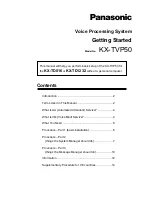
Sensors
Page 5
© 2017 Valeport Ltd
Certain features of the sensor package are designed specifically to enable high quality
data to be delivered:
Carbon Composite Rods:
The carbon composite material used for the sensor spacer rods has been specifically
selected to provide 3 features:
a) Excellent corrosion resistance
b) Very high strength
c) Virtually zero coefficient of thermal expansion
This last point is particularly important; accurate sound velocity measurement relies on
measuring the time taken for a pulse of sound to travel a known distance. The material
selected does not measurably expand over the operating temperatures of the
instrument, ensuring the highest possible accuracy at all times.
Size:
The longer the path length used, the higher the accuracy that can be achieved. It has
been found that a signal stability of ±2mm/sec can be achieved with a sensor path
length of 25mm (overall 50mm path for reflected signal), falling to ±1.7mm/sec for a
100mm path (overall 200mm path for reflected signal).
Digital Sampling Technique:
Enables a timing resolution of 1/100th of a nanosecond, equivalent to about 0.5mm/sec
speed of sound on a 25mm path sensor, or 0.125mm/sec on a 100mm sensor. In practice,
the output is restricted to 1mm/sec resolution.
Linear sensor performance allows easy calibration.
2.2. Physical Characteristics
Main housing
Titanium or Acetal
Main bulkhead
Titanium
Space Rods
Carbon Composite
Reflector Assembly
Titanium
SV Transducer
Ceramic transducer behind polycarbonate window.
Signal cable
3mm co-ax cable, nominal 25cm length. Push fit connector.
Pressure Transducer
Stainless steel diaphragm with acetal protective cover.
Temperature sensor
PRT in titanium housing with polyurethane backing.






































